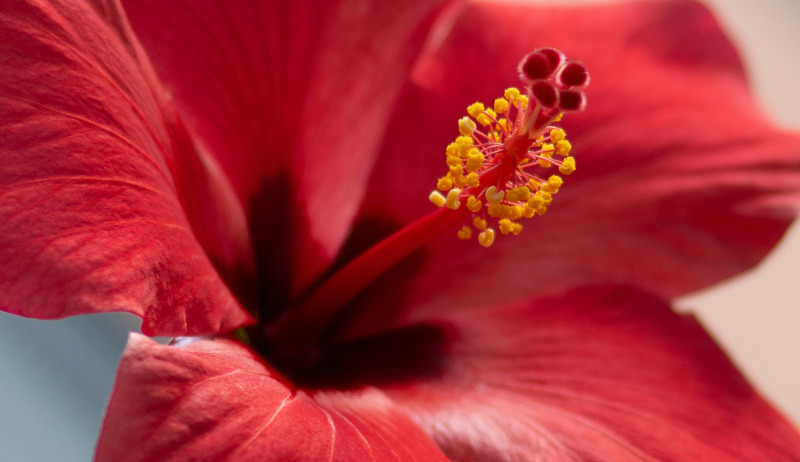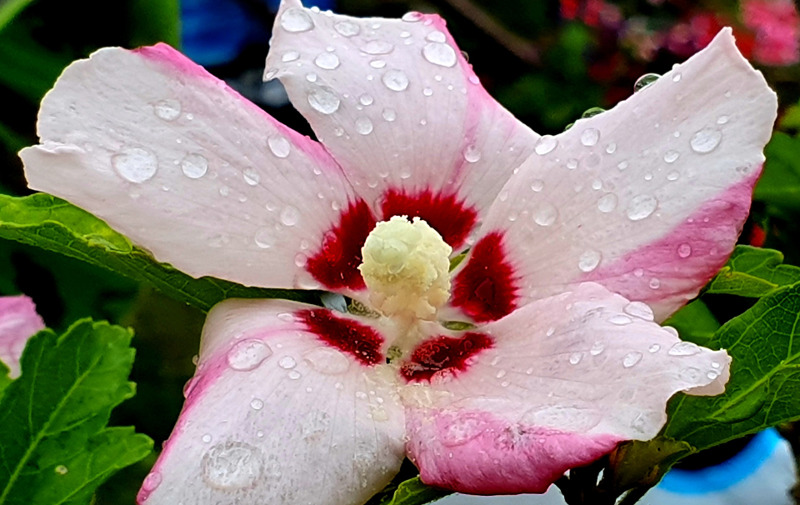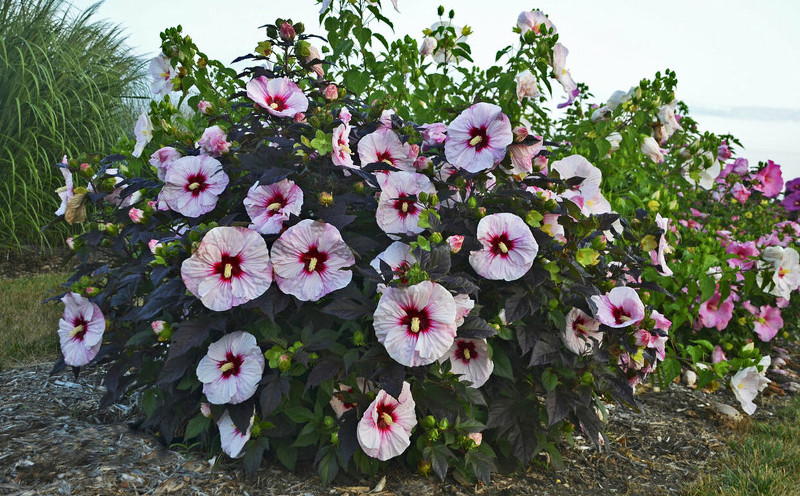Hibiscus is a genus of flowering plants in the mallow family, Malvaceae. The genus is very large, comprising several hundred species that are native to warm temperate, subtropical and tropical regions throughout the world. Also referred to as hardy hibiscus, rose of sharon, and tropical hibiscus, the plant boasts showy flowers in shades of orange, yellow, pink, red, and multicolor. Tropical hibiscus flowers typically grow 4-6 inches across. Rose of Sharon varieties produce smaller flowers, but reach up to 12 feet tall and 10 feet wide. Hardy in USDA zones 5-9, this plant thrives in full sunlight. Hibiscus plants are a great container plant on patios and near pool areas or along the back of flower beds.

Planting Hibiscus
Rose of Sharon plants are very easy to grow. Choose a location that will get full sunlight. Plant your Hibiscus in fertile, well-drained soil to produce a healthy plant. Species that die back each year should be spaced 2 to 3 feet apart. To prevent breakage of long stems, choose a planting site that is not exposed to strong winds. Hibiscus plants will also grow well in containers.
Watering Hibiscus
Hibiscus plants require moist well drained soil. Typically, this plant needs one inch of water per week. They like constantly moist, but not soggy soil. During the bloom time, they may need larger amounts of water. If a Hibiscus dries out too much, the foliage will drop and the plant will look like a mound of dead sticks. Despite needing a lot of water, be careful about too much sitting water as this can cause root rot.

Fertilizing Hibiscus
A blooming Hibiscus plant needs a lot of nutrients. During the summer months, a fertilizer with high potassium is best. Use a diluted liquid fertilizer once a week or a slow release fertilizer once a month. Apply at the base of the plant, avoiding getting the foliage wet. Water well after application. Careful of over fertilizing, as too much phosphorus can kill the plant.
Pruning Hibiscus
Hibiscus bloom on this year’s growth (new wood), so it is best to prune in the early spring. Pruning encourages more branching and more flower stalks. To promote reblooming, remove spent flowers before they form seed heads, by snipping back by one third. This also helps to keep the plant tidy. In the fall, you can prune the plant to shape it.

Caring For Hibiscus in Pots
Many gardeners prefer to plant Hibiscus in containers. For the best blooms, place the container in a location that will get at least six hours of sunlight each day. Hibiscus prefer a tight fit when planted in a container. When repotting, choose a slightly larger container allowing only a little room for growth. Plant the root ball one inch below the edge of the container. Surround the root ball with good quality potting mix. Make sure that the container has good drainage holes.
Winter Care for Hibiscus
Hibiscus plants grown in the garden will die back after the first hard frost. Cut the plant down 4-5 inches and wait for them to sprout back up in the spring. Container grown Hibiscus can overwinter indoors if provided with warm temperature and a lot of light. Indoor Hibiscus will need consistent moisture, but be careful not to allow the plant to sit in water. Winter is a resting period for the plant, so minimal watering and fertilizing is best.
Plants We Recommend
Common Hibiscus Care Questions
Does Hibiscus-like Sun Or Shade?
While hibiscus will tolerate some shade, they really thrive, both in number and quality of blooms and growth rate, in the full sun. If you live somewhere with a very hot climate, they'll benefit from some shade during the hottest part of the afternoon.
How To Care For Hibiscus In Spring?
Hibiscus pruning should take place in the spring before new growth shows itself. You can trim back, up to one-third of the branch. Trimming the branches encourages new branching, which will, in turn, provide more blooming! Also in the spring, hibiscus will appreciate a light application of fertilizer.
Are Hibiscus Invasive?
Some hibiscus can be considered to be a bit invasive, as they produce a multitude of seeds that germinate, very easily. This can be avoided by deadheading any spent, faded blooms before they go to seed. There are also plenty of varieties that do not produce viable seeds.
What Is The Growth Rate For Hibiscus?
Hibiscus are fast growers, putting on up to 24 inches a year. They usually reach their mature size in just 2-3 years.
How To Care For Hibiscus After Blooming?
While it isn't necessary to deadhead hibiscus, you may want to do so, before they go to seed. The seeds germinate very easily and there are a lot of them. Deadheading also helps keep the plant looking pretty, though with a very large number of blooms, keeping up maybe a lot of work.
Why Does Hibiscus Leaves Turning Yellow?
Yellowing leaves on a hibiscus plant can be caused by a nutrient deficiency in the soil and can be fixed easily by adding some soil amendments or by fertilizing the plant. Hibiscus prefer the soil to be consistently moist and don't like to have soggy or dried-out feet. Both under- and over-watering can cause yellowed leaves.
Have a question about Hibiscus? Fill out the form below and we will try and get back to your question as soon as possible. We may even feature your question on this article to help other gardeners!
